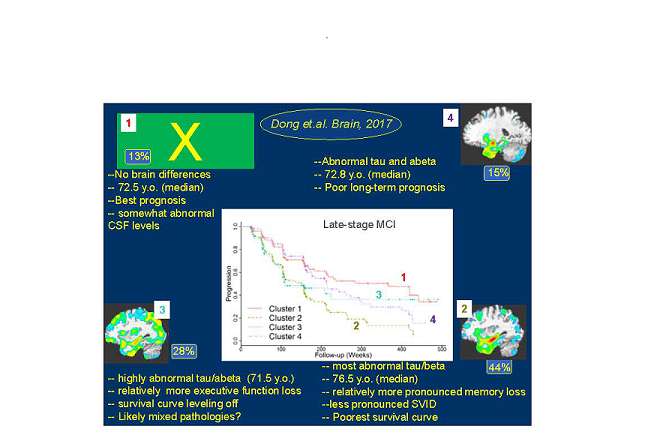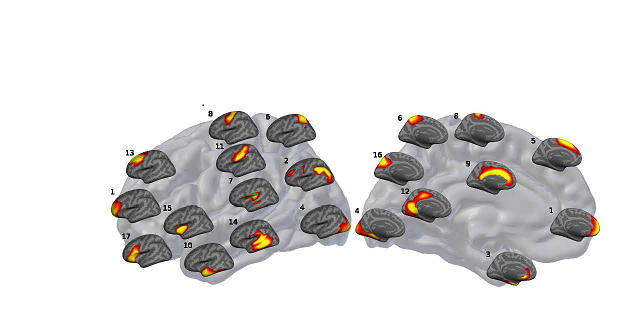Clinical Neuroscience
Aging and Alzheimer’s Disease
Our laboratory was among the first labs to develop machine learning-based imaging biomarkers[1, 3] with emphasis on neuropsychiatry, aging and Alzheimer’s Disease, and to show that these individualized biomarkers have high prognostic value in terms of progressing from normal cognition to mild cognitive impairment[22], and from MCI to AD[23]. More recently, application of heterogeneity analysis methods revealed multiple patterns of brain aging[24], MCI and Alzheimer’s Disease[25], with predictive value:

Schizophrenia
Pioneering work from our laboratory in 2004 revealed that machine learning was able to produce an imaging signature of schizophrenia that could be identified quite reliably on an individual patient basis[3]. Subsequent work by multiple groups built on these ideas[26, 27]. More recently, we used HYDRA to identify two neuroanatomical subtypes of schizophrenia[28].
Brain Development
Using orthogonally-projective non-negative matrix factorization[29] applied to data from a population of children and adolescents, our group showed that there are patterns of coordinated brain growth and maturation, which follow patterns of evolutionary expansion of the brain[30]:

Figure: op-NMF applied to cortical thickness data revealed 17 components of structural covariance, i.e. of coordinated increases or decreases of cortical thickness among individuals.

